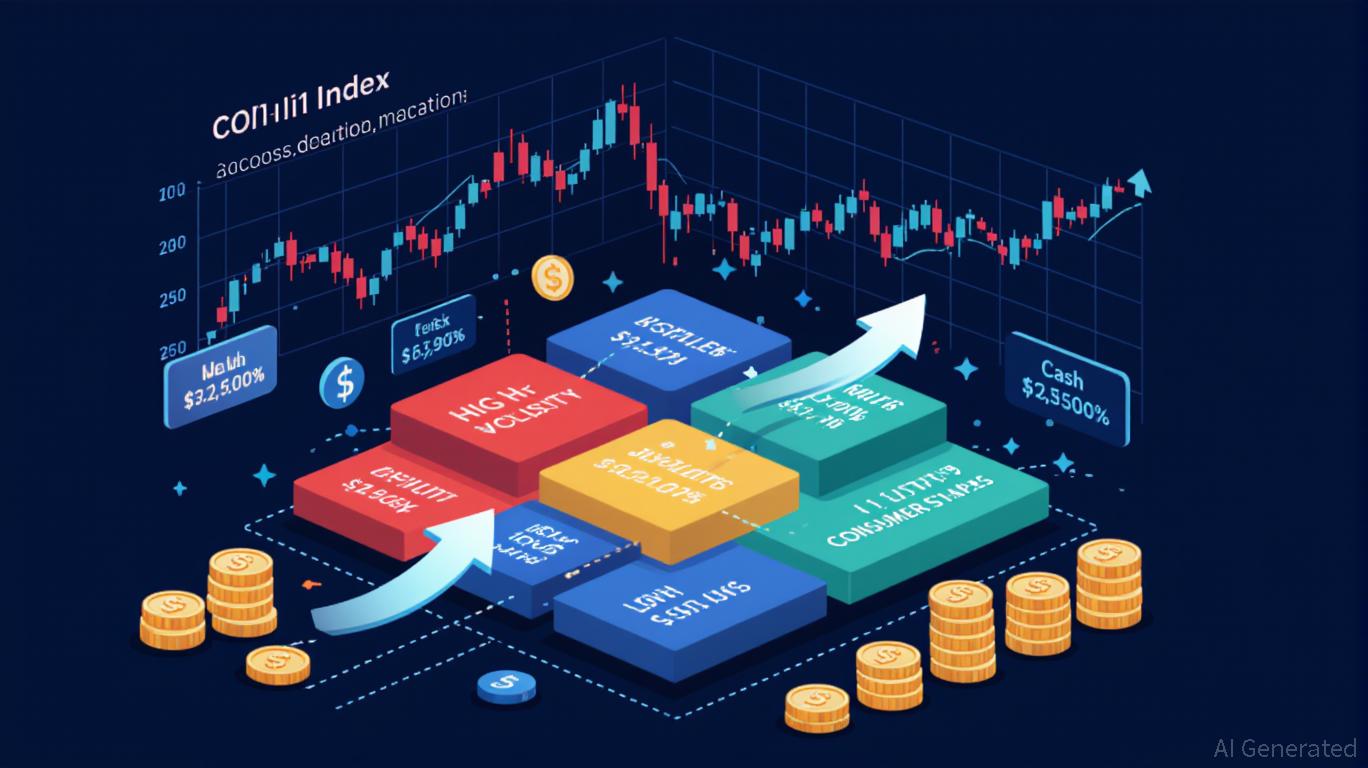Institutional optimism and expectations for ETFs are driving XRP closer to the $25 mark
- Analysts predict XRP could surge to $25 in 2025, driven by SEC settlement, ETF potential, and institutional adoption. - Southeast Asia's cross-border payment growth and $880M in whale purchases reinforce XRP's utility-driven demand. - Technical indicators show bullish momentum, with $3.15-$3.20 as key short-term resistance levels. - Risks include regulatory uncertainty, market volatility, and potential 50% corrections post-price peaks. - Long-term targets range from $20-$30, contingent on sustained macro

Source: [1]
An increasing number of crypto analysts and institutional players are spotlighting XRP, Ripple’s native token, as a possible standout performer in 2025, with some projecting it could climb to $25. This positive outlook is fueled by regulatory progress, expanding real-world use, and favorable technical signals.
The recent resolution between Ripple Labs and the U.S. Securities and Exchange Commission (SEC) has cleared legal obstacles for XRP, paving the way for greater institutional involvement. Jake Claver, Managing Director at Digital Ascension Group, pointed out that a U.S.-sanctioned XRP ETF could bring in significant institutional capital, with short-term price goals of $10–$13 and a potential rise to $20–$25 by the end of the year. The growing use of XRP for international payments in Southeast Asia, especially through collaborations like SBI Remit, further strengthens its demand based on utility. Large-scale accumulation by institutions, including $880 million in major purchases over the last month, highlights ongoing confidence in XRP’s future prospects.
From a technical perspective, XRP appears to be in a favorable position. Market observers have identified a possible cup-and-handle formation, with a breakout above $3.15 potentially leading to $4.20. With XRP currently trading at $2.98, there has been a noticeable uptick in futures market activity, indicating increased speculative interest. XForce, an advocate of Elliott Wave Theory, envisions a multi-phase rally toward $25, provided bullish momentum persists. Key resistance levels at $3.15 and $3.20 are seen as crucial for further upward movement.
Although price predictions differ, the majority of experts believe XRP could break past $5 in the short term. Zach Rector expects a market cycle peak between $20 and $30, but warns of a possible 50% drop after reaching the top. EGRAG Crypto recommends a tactical approach, advising to take profits between $4 and $13, with a long-term aim of $27–$30. CasiTrades forecasts a year-end price of $26, assuming continued macroeconomic support. On the other hand, Armando Pantoja projects XRP could hit $25 within two years, driven by expanding real-world applications.
Despite widespread optimism, certain risks remain. Regulatory ambiguity outside the U.S. and rivalry from other cross-border payment platforms present ongoing challenges. Broader market swings, shaped by interest rate changes and global events, could also prompt corrections. For example, if XRP fails to surpass $2.25, a decline to $2.08 or $1.90 could occur. Analysts stress that while XRP’s fundamentals are strong, its path will ultimately depend on market dynamics and further regulatory clarity.
With regulatory improvements, institutional interest, and technical strength converging, XRP is positioned as a major contender for 2025. Although the $25 target is speculative, the token’s practical uses and ETF prospects offer a solid base. Investors should keep an eye on important resistance points and regulatory shifts, balancing optimism with prudent risk management. As the cryptocurrency landscape changes, XRP’s success will depend on its ability to sustain adoption and weather macroeconomic challenges.
Disclaimer: The content of this article solely reflects the author's opinion and does not represent the platform in any capacity. This article is not intended to serve as a reference for making investment decisions.
You may also like
Ethereum News Update: Avail’s Nexus Bridges Liquidity Across 12 Blockchains, Tackling Fragmentation
- Avail's Nexus Mainnet launches as a cross-chain execution layer unifying liquidity across 12 blockchains including Ethereum and BNB Chain. - The intent-solver architecture automates optimal routing while aggregating liquidity from multiple chains through Avail's data availability layer. - Developers gain simplified cross-chain integration via SDKs and APIs, enabling real-time collateral pools and intent-based trading without managing bridges. - With Solana integration planned and Infinity Blocks roadmap

Ethereum News Update: Ethereum Drives Institutional Transformation with Amundi Tokenizing Major Fund
- Amundi tokenizes a money market fund on Ethereum , signaling institutional adoption of blockchain-based asset management. - Ethereum's upgrades like PeerDAS and Bhutan's $970k ETH staking highlight growing institutional trust in its infrastructure. - CoinShares' $250M Bitcoin Miners ETF and global digital ID initiatives underscore tokenization's role in modernizing finance. - Ethereum's $3,100 price resistance and technical indicators suggest potential for long-term resilience amid scaling improvements.

Hyperliquid News Today: Hyperliquid Adopts Tidewater’s Strategy to Streamline Crypto Risk Management
- Hyperliquid introduces automated downsizing to stabilize HYPE, which dropped 52% from its peak. - Strategy mirrors Tidewater Renewables' capacity management, balancing short-term volatility with long-term stability. - Hyperliquid Strategies DAT plans $300M HYPE buybacks to inject liquidity and institutional-grade risk frameworks. - Market faces $1.89B+ liquidation risks if Bitcoin/Ethereum surge, prompting automated buffers to prevent cascading sell-offs. - Approach reflects growing DeFi adoption of algo
The Unexpected COAI Price Decline: Key Lessons for Investors from the November 2025 Market Turbulence
- COAI Index's 88% November 2025 collapse stemmed from C3.ai governance failures, regulatory ambiguity, and panic-driven herd behavior. - Market psychology amplified losses as investors overreacted to AI sector risks, ignoring fundamentals and triggering liquidity crises. - Diversification, cash reserves, and AI-driven tools helped mitigate risks, emphasizing long-term strategies over speculative hype. - The crisis exposed dangers of overreliance on AI/DeFi narratives, urging disciplined, diversified portf
